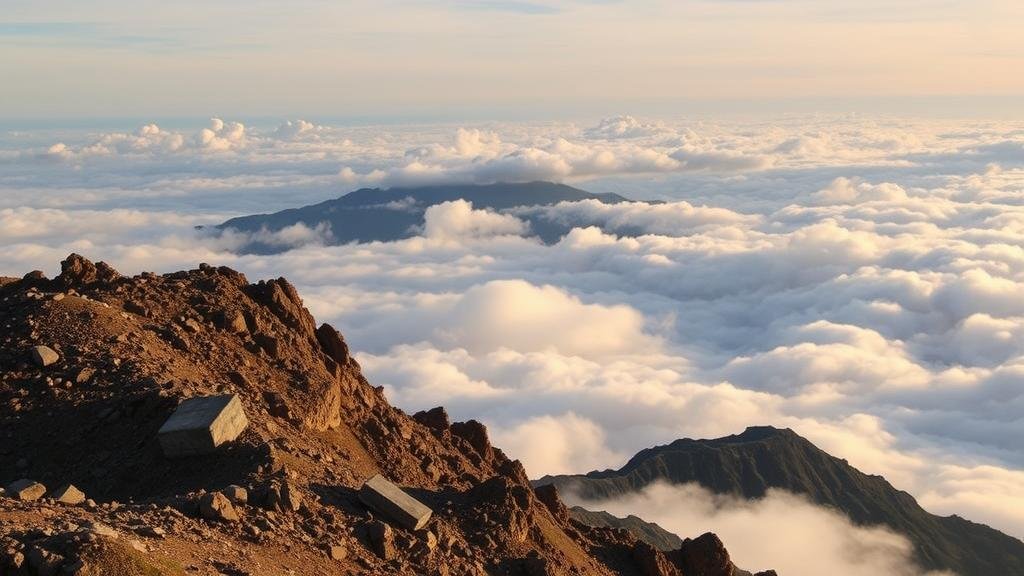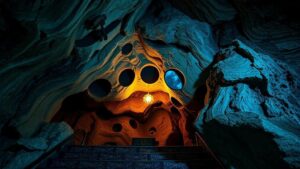Investigating the uncharted peaks of the Andes for ceremonial sites above the clouds.
Investigating the Uncharted Peaks of the Andes for Ceremonial Sites Above the Clouds
The Andes mountain range, stretching over 7,000 kilometers along the western edge of South America, is one of the most remarkable geographical features on the planet. Known for its breathtaking landscapes and rich cultural heritage, the Andes serve as a significant historical site for various ancient civilizations, particularly the Inca. This article explores the uncharted peaks of the Andes, investigating the archaeological significance of potential ceremonial sites located above the clouds.
The Significance of the Andes Mountains
The Andes are often referred to as the spine of South America, running through seven countries: Venezuela, Colombia, Ecuador, Peru, Bolivia, Chile, and Argentina. This range hosts numerous ecosystems and altitudinal zones, presenting unique challenges and opportunities for habitation and ceremonial practices. Historical data indicate that indigenous peoples, including the Inca, utilized high-altitude sites for religious ceremonies and astronomical observations.
Archaeological Discoveries Above the Clouds
Recent archaeological expeditions have focused on the higher altitudes of the Andes, where researchers are uncovering evidence of ceremonial sites that have remained hidden for centuries. For example, in 2014, a team of archaeologists discovered a series of stone structures in the Colca Canyon region of Peru at altitudes exceeding 4,000 meters. e structures are believed to have been used for rituals associated with mountain worship and agricultural cycles.
This discovery aligns with the historical accounts of the Inca, who considered higher altitudes sacred and often constructed temples and shrines in these areas. The use of materials indigenous to the region, such as sandstone and volcanic rock, reveals an advanced understanding of local geology and climate.
Technological Advances in Archaeology
The exploration of these uncharted peaks has been greatly facilitated by advancements in technology. Tools such as Ground Penetrating Radar (GPR) and LiDAR (Light Detection and Ranging) allow archaeologists to peer beneath the surface without disturbing the landscape. For example, a 2019 study utilizing LiDAR technology in the Peruvian Andes identified over 60 previously unknown structures, suggesting a larger network of ceremonial sites than previously understood.
Also, the application of Geographic Information Systems (GIS) has enabled researchers to analyze the spatial distribution of these sites. GIS tools can illustrate the correlation between geographic features and the location of archaeological findings, enhancing our understanding of the cultural landscape.
Cultural Perspectives on High-Altitude Ceremonies
Indigenous cultures in the Andes retain a profound connection to the landscape, viewing mountains not merely as geographical features but as deities deserving of reverence. This perspective is encapsulated in the Andean principle of Pachamama, or Mother Earth, which reflects a deep-seated spiritual belief that extends to high-altitude sites. Rituals often include offerings and ceremonies that seek to honor the mountains and ensure favorable conditions for agriculture and community wellbeing.
- The Qoyllur Riti festival, held annually in the Sinakara Valley, attracts thousands of participants who ascend the mountains to perform rituals dedicated to the Lord of Qoyllur Riti.
- In Bolivia, the Apus are revered as mountain spirits, with communities conducting offerings at various altitudes, emphasizing the sacredness of these elevated sites.
Challenges of High-Altitude Archaeology
Conducting archaeological research in high-altitude environments poses significant challenges, including extreme weather, altitude sickness, and logistical complexities. Teams often operate under limited time frames, particularly during the short summer season when conditions are more favorable for exploration.
Also, the environmental impact of excavation in these delicate ecosystems raises ethical concerns regarding preservation and sustainability. It is essential that future investigations prioritize non-invasive methods and work collaboratively with indigenous communities to uphold both cultural integrity and environmental stewardship.
Future Directions in Research
As researchers continue to investigate these uncharted peaks, the potential for new discoveries remains high. Future studies may focus on:
- The impact of climate change on archaeological sites and the risks posed to fragile ecosystems.
- Collaboration with indigenous knowledge keepers to incorporate traditional narratives into the scientific understanding of ceremonial practices.
- The development of sustainable tourism strategies that allow for cultural exchange while protecting archaeological integrity.
Actionable Takeaways
Exploring the uncharted peaks of the Andes reveals not only the rich history of ancient civilizations but also the ongoing importance of these sites in contemporary indigenous cultures. As technological advances continue to enhance archaeological practices, it is crucial to cultivate respectful approaches that prioritize collaboration, sustainability, and the preservation of cultural heritage.
Researchers and enthusiasts interested in this field should consider the following:
- Engaging with local communities to understand cultural perspectives on archaeological sites.
- Utilizing non-invasive research methods to minimize environmental impact.
- Staying informed about advancements in technology that improve archaeological surveying and data analysis.
To wrap up, the uncharted peaks of the Andes hold secrets waiting to be uncovered–an ongoing journey that bridges the past with the cultural narratives of the present and future.



